#css responsive cards
Explore tagged Tumblr posts
Text

Responsive Cards CSS
#css responsive cards#responsive web design#html css#frontend#css#html#css3#frontenddevelopment#webdesign#code#neduzone#learn to code#css cards
6 notes
·
View notes
Text

Product Card Responsive
#responsive web design#responsive product card#html css#divinectorweb#css3#html5#frontenddevelopment#responsive card design#css#html#webdesign#css tricks
6 notes
·
View notes
Text

CSS Responsive Profile Card
#css cards#codenewbies#html css#html5 css3#webdesign#css#css profile card#profile card html css#responsive web design
3 notes
·
View notes
Text
3 Game/Coding Resources!
I wanted to put together a few resources I found for people who might be planning to make games, or might be looking to learn coding!
The first resource is for anyone looking to learn how to code, build a portfolio, and get Certifications:
This is something I've recently been using myself and I can attest that it is an excellent resource!! They have many different paths you can learn, and right now I’m on the Responsive Web Design Certification. You can learn HTML and CSS, in order to create responsive pages. It teaches you through projects, where it breaks down different parts of the coding language and shows you how to use it. Some projects are optional, and some you have to complete in order to earn your certification. Certification projects don’t have instructions, only a rubric of what the project needs to be able to do, but you can learn all those skills in the optional projects! They also have Javascript, Frontend Development, Information Security… the list goes on! The website is run by a really cool non profit. I definitely recommend giving it a try!!
2. The second is for game developers who are looking for background music:
@/茶葉のぎか (Nogika Chaba on twitter) makes some really awesome 8bit-sounding BGM! And a lot of it is free for commercial/non commercial use!!
Make sure to check the description (you can translate to your language) for their policies. Many of their videos are tagged #freeBGM, which if you check their Pixiv Fanbox terms of service (in the desc of each video, please do check it before you use it) states that you are able to use the music in commercial/non commercial works:
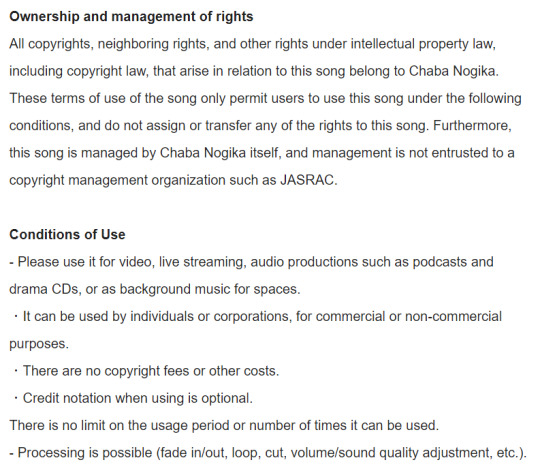
2. The third resource is for students:
Whether you're a university student, college, high school, or elementary, Github gives you free Github pro, as well as a curation of free offers! You do need a piece of student ID (proof that you indeed belong to an institution, eg. report card, student card, etc), but it has a host of offers. Microsoft offers free cloud training through this, there are multiple offers for learning a new coding language for free (eg. Codedex free 6-month subscription, which will also give you certificates once completed), you can get free domain names, the list goes on! If you are a student, I highly recommend that you give it a try, since it's 100% free!
#coding resource#game resource#coding#free#background music#if you have any other resources#let me know!!
18 notes
·
View notes
Text
Mastering the Art of CSS Translate Property
Do you want to elevate your CSS skills? 🌟 💡 Ever wondered how to create stunning web animations and smooth transitions? Check out our latest blog post: Mastering the Art of CSS Translate Property: A Comprehensive Guide with 7 Examples In this guide, you will learn all about the CSS Translate property and how it works, along with key insights on the Transform property. Discover 7 hands-on examples, including how to create sliding menus, animated flip cards, stylish draggable elements, centered image galleries with hover effects, smooth and responsive modals, expanding search bars, and dynamic search bars. Don't miss out on these powerful techniques to enhance your web projects! 🚀 Read the full guide now and start creating amazing CSS animations today! 👇
#WebDesign#CSS#FrontendDevelopment#WebDevelopment#CSS3#Programming#WebDev#Animation#UXDesign#JavaScript#skillivo#skillivoBlogs $hashtag#slidingMenus#animatedFlipCards#CSSmodals
3 notes
·
View notes
Text
50+HTML, CSS and JavaScript Projects With Source Code
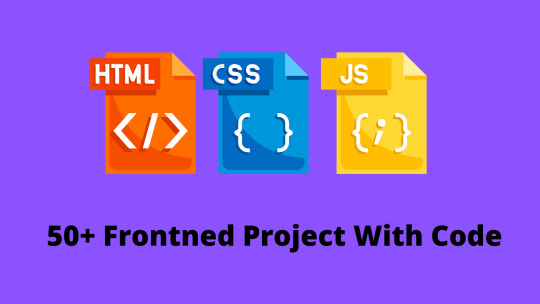
The 50+ HTML, CSS, and Javascript projects list is a boon for beginner developers who wish to make a career in the field of web development. But for that, developers have to go through a lot of learning and project building, and while on the path of skill enhancement, they take a bit of stress because they don’t easily find the topics on which they create their projects. So in the world of web development, we have curated a list of 50+ beginner-friendly HTML, CSS, and JavaScript projects.
Almost 50 of the most significant projects will be covered in this post; these Web Development Projects With Source Code will help you build a strong foundation. You will gain practical experience with the project and be able to develop new, large projects that involve numerous websites as a result of working on this front-end project.
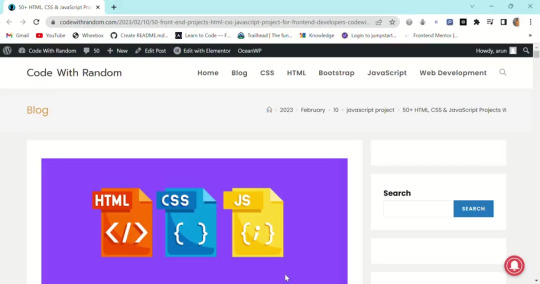
You Get 50+ Web Development Projects with Source Code for total beginners using HTML, CSS, and JavaScript.
We include projects using HTML CSS and Javascript with source code from beginner to intermediate levels covered in this article.
you get all project source code with code explanation. project is very helpful for practicing coding skills and logic building so you definitely need to create some projects that help you to get a dream job and you can add projects to your CV/Resume.
If you want more frontend projects then don’t forget to visit my 100+ HTML, CSS, and JavaScript Projects with the source code, So Must Visit the article👇.
100+ JavaScript Projects With Source Code ( Beginners to Advanced)
1. Social media share icon animation
Project details – Social media icons are used for the identification of specific social media platforms. Each social media platform has different icons. Social media platforms are used to connect people from faraway places and provide a feeling of closeness. Adding animations to icons provides great user interaction.
Browser support: Chrome, Edge, Firefox, Opera, Safari
Responsive: Yes
language: Html, CSS
Project Code Download: Click Here
Project Demo :
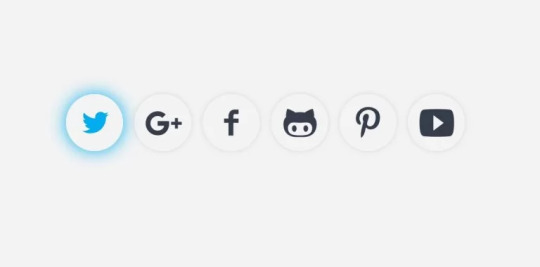
3. Card With Hover Effect
Project Details – Cards are small pages that are used to display product information. Cards with a hover effect provide a great user experience, and when the user hovers over the cards, information about the product is displayed to the customer. These cards are generally used on e-commerce websites.
Browser Support: Chrome, Edge, Firefox, Opera, Safari
Responsive: Yes
language: Html, CSS
Project Code Download: Click Here
Project Demo:
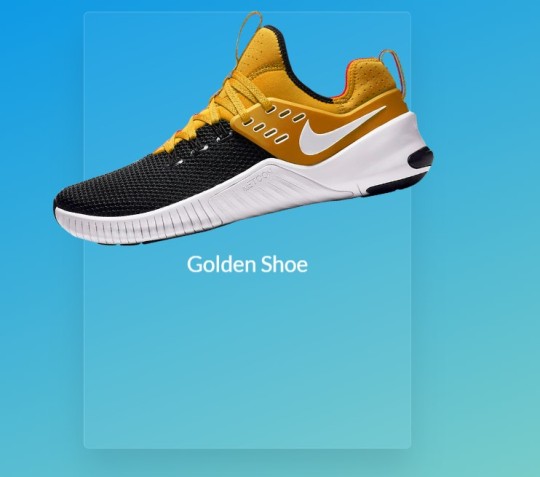
read full artical and more intresting projects with source code

3 notes
·
View notes
Text
Responsive Glassmorphism Section. Card Hover Effects: https://codepen.io/AlexZab/pen/GREpYqp More CSS card hover effects: https://freefrontend.com/css-card-hover-effects/
4 notes
·
View notes
Note
Hi Dear :) I found your november template and I'm in love with it! I wanted to ask you if it's somehow possible, to have more than one featured project on the right sidebar. Kinda like a responsive card slider or something like that, where you can display more on-going projects. I've tried to follow tutorials but I'm just learning about html/css stuff. Of course it's totally fine if you don't want to. Hope you don't mind me asking. Keep up the great work and have a nice day :)
hi! thanks so much! unfortunately that kind of card slider would be a pretty big customization to the code, and i don't really do those. i have seen some people remove the little stats section that's underneath the project and copy+paste add another project section there, which you could do if you want!
4 notes
·
View notes
Text
Local Question-Based Content Strategies for Realtor Websites
Voice Search Adoption
Voice-activated queries account for a growing share of real estate searches as smart speakers and mobile assistants become ubiquitous. Users speak naturally when asking for property information, favoring phrases like “homes for sale near me” or “best neighborhoods with good schools.” Recognizing this shift, SEO strategies must adapt to match conversational language rather than traditional short-tail keywords.
Conversational Keyword Focus
Instead of targeting isolated terms, compile long-tail question phrases that mirror spoken queries. Examples include “how much are condos in downtown” or “what are the average home prices in my zip code.” Tools that analyze voice query patterns help identify these phrases. Integrating natural language questions into content ensures pages rank when users ask voice assistants directly. Drive more leads and sales with our real estate SEO services! https://tinytomatodesign.com/seo/
Local Query Optimization
Most voice searches for real estate have local intent. Phrases such as “find a realtor near me” or “apartments for rent in [city]” require listings to appear prominently in local search results. Updating title tags and meta descriptions with city names, neighborhoods, and service areas increases relevance. Consistent citations of address and service scope across directories support accurate voice-driven results.
Featured Snippet Targeting
Voice assistants often pull answers from featured snippets. Structuring content to answer common real estate questions—like “what documents are needed to buy a home” or “how to calculate mortgage payments”—improves the chance of appearing in voice response cards. Use concise paragraphs, bullet lists, and step-by-step guides to increase snippet eligibility.
FAQ Section Strategy
Creating a dedicated FAQ page that lists typical voice queries can capture traffic from spoken searches. Each question should be phrased exactly as a user might speak and followed by a brief, clear answer. Organizing FAQs by topic—financing, inspections, local schools—simplifies indexing. Regularly update this section based on new market trends and frequently asked voice queries.
Structured Data Markup
Implement schema markup for FAQs, local business details, and property listings to help search engines understand page context. Adding JSON-LD markup for address, phone number, and service area signals location-specific relevance. Marking up property details—such as price, number of bedrooms, and availability—can improve eligibility for rich results that voice assistants reference.
Mobile Performance and Speed
Fast-loading pages are essential when users access information via mobile voice searches. Compress images, leverage browser caching, and minify CSS and JavaScript to ensure quick load times. A mobile-responsive design prevents layout issues. Faster sites rank higher in mobile search results, indirectly boosting voice search visibility.
Natural Language Content
Write content in a conversational tone, using everyday language rather than technical jargon. Describe processes—like scheduling a showing or obtaining a mortgage—in simple, direct sentences. Incorporate synonyms and related phrases to cover variations in how users phrase voice queries. Consistently updating content based on user feedback and search analytics maintains relevance over time. Maximize Your reach with expert realtor wordpress website design!
0 notes
Text
🚀 From Novice to Pro: Build a Swiggy-Style Food App with React 18

Have you ever dreamed of building a food delivery app like Swiggy or Zomato using the most in-demand frontend library, React? Whether you're a beginner or looking to elevate your frontend development skills, React 18 opens up incredible possibilities—and the best way to master it is by getting hands-on.
Imagine being able to create a real-world food delivery platform, complete with features like dynamic menus, cart functionality, and routing—all from scratch. If that sounds like your jam, you're going to love the journey of learning React through the lens of building a Swiggy-style food app.
And here's the good news: you don’t have to do it alone. With the course Mastering React 18: Build a Swiggy-Style Food App, you’ll get everything you need—step-by-step guidance, real-world coding experience, and modern best practices.
Let’s break down why this is one of the smartest ways to learn React in 2025.
Why React 18 Is Still a Game-Changer in 2025
React has come a long way, but React 18 is where the future starts. With features like automatic batching, concurrent rendering, and the transition API, it brings smoother UI updates and better performance to your applications.
These updates are more than just technical improvements—they directly impact user experience. Whether you’re building a personal project or developing apps for clients, React 18 ensures that your interfaces are responsive, scalable, and lightning-fast.
In other words, learning React 18 gives you a serious edge in today’s frontend job market.
What Makes Building a Food Delivery App So Valuable?
You might wonder: why a food delivery app? Why not just build a to-do list or calculator?
Great question.
Here’s the truth: while basic projects help you learn syntax, real-world projects like a Swiggy-style app teach you how to think like a developer. They help you understand how to:
Structure components effectively
Manage application-wide state
Integrate APIs and fetch dynamic data
Use advanced features like lazy loading, routing, and conditional rendering
Optimize performance and manage code reusability
Plus, let’s be honest—a food app is way more fun to build and show off than a to-do list.
What You’ll Learn in This Course
The course Mastering React 18: Build a Swiggy-Style Food App isn’t just about React basics. It’s about learning to build a complete, fully-functional application that mimics the UX and UI of a real-world platform.
Here’s what you can expect to master:
🔹 Setting Up Your Development Environment
From setting up your folder structure to installing the latest React 18 version, the course walks you through everything. You'll even get hands-on with Vite or Create React App for fast and optimized development.
🔹 Component-Based Architecture
You’ll learn how to break your app into reusable, modular components—like headers, cards, menus, and cart elements—following modern practices.
🔹 Routing & Navigation
React Router DOM makes navigating through your app smooth and dynamic. Learn how to implement routes like Home, Restaurant Details, Checkout, and more.
🔹 State Management
Explore React’s built-in useState and useReducer hooks, and get introduced to state management tools like Redux Toolkit or Context API to manage global states like cart contents or restaurant menus.
🔹 Working with APIs
Discover how to fetch real-time data from mock APIs (or real ones!) and display it dynamically in your app. Learn about useEffect, asynchronous calls, and loading states.
🔹 Optimizing User Experience
Dive into performance tricks—like code splitting, lazy loading, and suspense—to make your app lightning-fast and SEO-friendly.
🔹 Responsive Design
Use CSS-in-JS, Tailwind CSS, or plain CSS to ensure your app looks great on all devices, from smartphones to desktops.
Who Is This Course For?
This course is for:
✅ Beginners who know some JavaScript and want to learn React by doing something practical ✅ Intermediate developers looking to refresh their skills and add a real-world project to their portfolio ✅ Freelancers & job seekers wanting to build portfolio-worthy projects that impress clients and employers
Whether you're aiming to land a job, freelance, or build your own startup, this course equips you with skills that truly matter.
Let’s Talk About Career Benefits 🎯
Once you’ve completed the app, you won’t just know React—you’ll own it. You’ll understand how to architect modern applications that can scale, perform, and delight users.
Employers love developers who:
Can build end-to-end projects
Understand state and data flow
Write clean, reusable code
Know how to debug and optimize
By learning through a real-world project like this food delivery app, you showcase exactly those skills.
Practical Features You’ll Build
To make things even more exciting, here are just some of the features you’ll bring to life in your food app:
🛍️ Cart Management
🍔 Dynamic Menus
📍 Restaurant Listings with Filters
📦 Add to Cart / Remove from Cart Functionality
🔄 Routing and Deep Linking
📲 Responsive Mobile Layout
🌐 SEO and Performance Optimization
By the end, you’ll have a polished app that looks and works like something you’d find on the App Store.
Why This Course Over Others?
There are dozens of React tutorials out there. So why pick this one?
Because it’s goal-oriented, real-world focused, and result-driven. Instead of showing you dry concepts in isolation, it walks you through a real business case: a Swiggy-style food app. It helps you think like a product engineer—not just a coder.
Also, this course is regularly updated, uses modern tooling, and helps you understand the why behind the how. That’s crucial when leveling up.
Learn by Doing: No More Tutorial Hell
The problem with most courses? You watch videos, nod along… and forget it all by the next day.
This course is different.
It encourages active learning. You’ll build the app alongside the instructor, write real code, and solve actual challenges. That’s the secret to mastering React and escaping “tutorial hell.”
Build Confidence Through Action
By the end of this course, you’ll have:
✅ A complete, responsive food delivery app in your portfolio ✅ A clear understanding of how React 18 works under the hood ✅ Real confidence to take on new frontend projects ✅ The ability to contribute to or lead React-based projects
It’s not just about watching someone code. It’s about gaining real experience that sticks.
Bonus: Reusable Codebase for Future Projects
Once you've completed the food app, you can reuse its architecture and logic for future e-commerce platforms, restaurant websites, or client projects. You’ll save time, work smarter, and deliver faster.
In short: you’ll have a strong foundation for your React journey.
Get Started Today
There’s no better time to learn React 18 than right now. The frontend ecosystem is thriving, and skills like these open doors—whether you want to work at a startup, land freelance gigs, or build your own product.
Ready to turn your coding dreams into reality?
👉 Mastering React 18: Build a Swiggy-Style Food App is the ultimate hands-on guide to modern React development.
Start building. Start growing. Start coding like a pro. 🚀
0 notes
Text
ELEGANCE - Landing Page
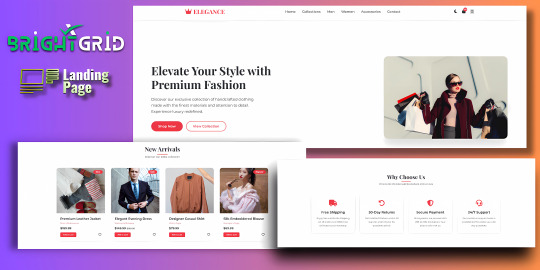
Live Demo | Buy Now
Key Highlights:
Dark/Light Mode Toggle: Enhance user experience with an adaptive color scheme.
Stylish Hero Section: Immediately grabs attention with bold typography and imagery.
Interactive Product Cards: Add-to-cart, wishlist, price tags, and categories.
Conversion-Driven Features: Includes newsletter form, feature highlights, and CTA buttons.
Responsive Layout: Fully optimized for all screen sizes (mobile, tablet, desktop).
WhatsApp Button: Easily reachable for customer inquiries.
Optional Protection Overlay: Disable copy/right-click in preview versions.
Built with clean HTML, CSS, and JS — no external frameworks — making it easy to customize and deploy immediately.
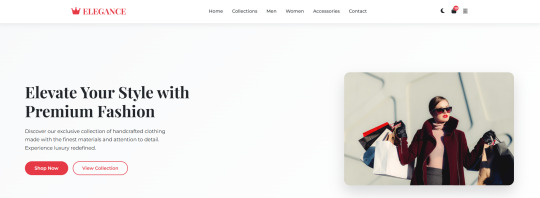
Features:
Responsive design for all screen sizes
Dark and light mode toggle
Animated hero and product sections
Product cards with wishlist and add-to-cart buttons
Newsletter subscription form
WhatsApp contact button
Protection overlay option for preview versions
Clean and organized HTML, CSS, and JS code
Font Awesome icons integrated
Google Fonts (Montserrat & Playfair Display)
Requirements:
Basic HTML/CSS knowledge (for customization)
Any code editor (e.g., VS Code, Sublime Text)
Modern web browser (for testing)
Internet connection (to load external assets like fonts/icons)
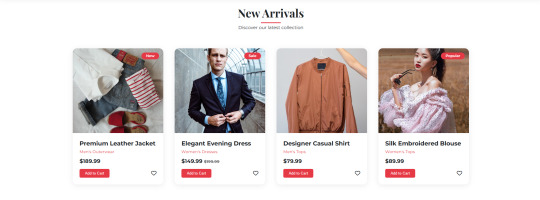
Instructions:
Unzip the downloaded folder.
Open index.html in your browser to preview the template.
Use any code editor to customize content, images, and branding.
Upload to your hosting or integrate into your web project.
(Optional) Modify protection overlay or WhatsApp number as needed.
Development Time:
12–14 hours (design + code + responsiveness + animations)
Message to Reviewer:
Hi, This is a responsive HTML landing page for a clothing brand. All assets are externally hosted (Unsplash, Font Awesome, Google Fonts). Let me know if anything else is required. Thanks!
Live Demo | Buy Now
#html#css#htmlcoding#html css#js#landing page#landing page builder#landing page design#landing pages#high fashion#panel#script
1 note
·
View note
Text

Responsive Cards
#css responsive cards#responsive cards bootstrap#codingflicks#html css#frontend#css#html#css3#frontenddevelopment#webdesign#bootstrap cards#responsive web design
1 note
·
View note
Text

Responsive Cards
#responsive cards html css#responsive web design#html css#divinector#css#html#webdesign#css3#frontenddevelopment#code#profile card
5 notes
·
View notes
Text

Movie Card UI Design
#movie card ui design#movie card css#css cards#responsive card design html css#html css#codenewbies#frontenddevelopment#css#html5 css3#webdesign#pure css tutorial#basic html css tutorial#responsive web design
2 notes
·
View notes
Text
Ultimate Guide to eCommerce Website Development in 2025: Features, Tech Stack & Best Practices
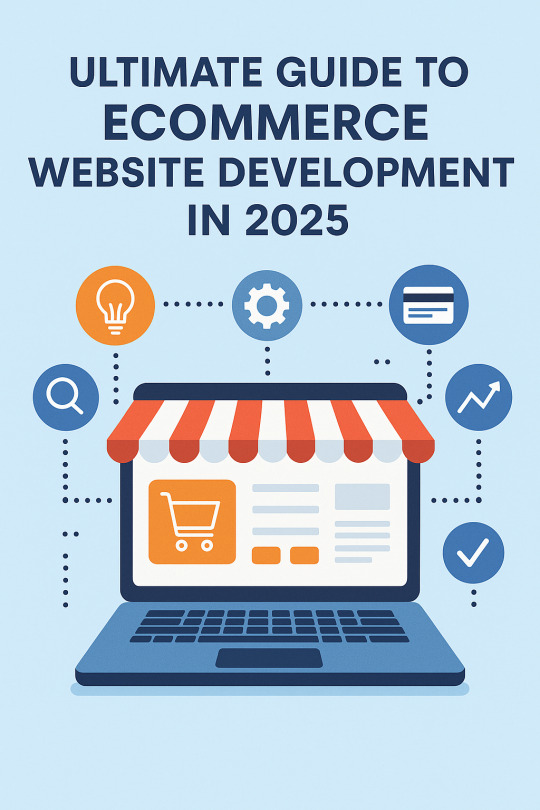
The world of online shopping is evolving rapidly. In 2025, having a high-performing, customer-centric eCommerce website isn’t just a bonus — it’s a necessity. Whether you’re launching a new online store or upgrading an existing one, working with an expert eCommerce website development company can set you up for long-term success.
This guide shares everything you need to know — from essential features to the right tech stack — and why choosing the best eCommerce website development company can make all the difference.
💡 What is eCommerce Website Development?
eCommerce website development is the process of building a robust online store where products or services can be searched, filtered, and purchased seamlessly. Whether you’re in fashion, electronics, or even looking into jewellery website development, the development process includes:
Front-end design and UX
Back-end logic, inventory, and checkout
Payment gateway integration
Third-party APIs (shipping, CRM, ERP)
If you’re planning a niche-specific platform like jewellery website development, features like dynamic gold rate integration, virtual try-ons, and private pricing catalogs are often critical.
🔑 Key Features of a Successful eCommerce Website
To stand out in 2025, your eCommerce site — whether general or niche like jewellery website development — must offer:
1. Dynamic Product Catalog
Real-time inventory updates
Bulk uploads & categorization
Private/public segmentation for B2B/B2C
2. Mobile-First Responsive Design
With mobile commerce dominating, the best eCommerce website development company always prioritizes responsive, mobile-friendly design.
3. Advanced Filtering & Search
Sort by material, price, availability, brand
For jewellery sites, add filters like purity (22K/18K), stone type, and weight
4. Personalized User Experience
AI-based product recommendations
Customer-specific pricing (vital for B2B and luxury niches like jewelry)
5. Secure Checkout & Payments
Top eCommerce website development companies ensure secure payment integration with UPI, cards, wallets, and buy-now-pay-later options.
6. ERP & CRM Integration
Real-time stock sync
Order & customer lifecycle tracking
Essential for high-volume sellers or complex inventory like in jewellery website development
7. WhatsApp & SMS Notifications
Order confirmation, shipping alerts, new arrivals
A feature many clients request when working with a jewellery website development expert
8. Loyalty & Rewards
Ideal for increasing repeat purchases
Works well across industries including jewellery
⚙️ Tech Stack: What Should You Use?
Choosing the right tech stack is one of the most critical steps in eCommerce website development. A professional eCommerce website development company will evaluate your business model, expected traffic, product complexity, and growth plans to recommend the best technologies. For the frontend, modern frameworks like React.js or Next.js paired with Tailwind CSS ensure fast, responsive, and mobile-first design. On the backend, scalable and secure platforms like Node.js, Laravel, or Django are often used to handle dynamic business logic and database operations. When it comes to managing content, headless CMS options such as Strapi or Sanity allow for flexible and fast content delivery. Databases like PostgreSQL or MongoDB are chosen based on the need for relational or NoSQL data structures. Hosting is typically managed through platforms like Vercel, AWS, or DigitalOcean to ensure speed and uptime. For payment processing, secure integrations with Razorpay, Stripe, or PayPal are a must. Finally, tools like Google Analytics 4 and Hotjar are used for monitoring user behavior and optimizing performance. When building niche-specific platforms — such as those involving jewellery website development — your development partner must be able to integrate features like real-time metal pricing, visual try-ons, and private catalogs. The best eCommerce website development company will always tailor the tech stack to meet these unique needs while keeping the platform scalable and secure.
🎯 Best Practices for eCommerce Success
Here’s what leading eCommerce website development companies recommend for optimal performance:
Design for trust with SSL and security badges
Optimize load times (<2 seconds)
Use rich media (images, 360° views, videos)
Simplify checkout with guest access and minimal steps
Implement structured data for better search visibility
Use retargeting tools to reduce abandoned carts
For example, if you’re managing a jewellery website, trust, product clarity, and fast performance are non-negotiable.
💰 Cost & Timeline Estimates
The cost and timeline for developing an eCommerce website can vary significantly depending on the size, features, and complexity of the project. A basic eCommerce website, with essential product listings and checkout functionality, can typically cost between $2,000 to $5,000 and be completed within 2 to 4 weeks. Mid-range stores with more advanced features like ERP integration, custom filters, loyalty programs, and responsive design may cost between $5,000 and $15,000, requiring around 1 to 2 months of development time. If you’re planning to build a high-end or specialized platform — such as a jewellery website development project featuring dynamic gold rates, product personalization, and WhatsApp notifications — the investment may range from $15,000 to $50,000 or more, and the timeline could stretch from 3 to 6 months, depending on complexity. Choosing the best eCommerce website development company ensures that you’re not only getting a cost-effective solution but also one that delivers long-term value through performance, scalability, and ongoing support. Keep in mind that maintenance, security, and marketing costs post-launch are also vital to factor into your overall budget.
🚀 Final Tips to Launch with Impact
Partner with the right eCommerce website development company that understands your industry
Conduct rigorous testing on mobile, desktop, and across browsers
Plan a strong launch strategy — SEO, email marketing, and influencer tie-ins
Iterate continuously based on real customer behavior and heatmaps
✅ Conclusion
Whether you’re building a general retail store or a niche-specific platform like a jewellery website, the success of your eCommerce journey depends on strong foundations — technology, design, and functionality. Choosing the best eCommerce website development company ensures your site is not only beautiful but also fast, secure, and conversion-optimized.
Looking to start your eCommerce journey the right way? Partner with a trusted eCommerce website development company that understands your vision, your customers, and your growth potential.
0 notes
Text
Key Factors for Creating an Effective Annual Report Template: Enhancing Clarity and Engagement
Annual Report Design Templates: Common Questions Answered
1. How to design an annual report template?
To design an annual report template, start with a clear structure: cover page, table of contents, executive summary, financial statements, achievements, and future goals. Use a consistent color scheme and typography that aligns with your brand. Incorporate visuals like charts and graphs for clarity. Ensure ample white space for readability and include contact information at the end.
2. What are the characteristics of a good annual report?
A good annual report is clear, concise, and visually appealing. It includes accurate financial statements, highlights key achievements, and outlines future goals. It should be accessible to various stakeholders, provide insights into company performance, and demonstrate transparency and accountability. Additionally, it often features narratives from leadership and showcases corporate social responsibility efforts.
3. What are the 3 kinds of design templates?
The three kinds of design templates are: 1. **Print Templates**: Used for physical materials like business cards, brochures, and flyers. 2. **Web Templates**: Pre-designed layouts for websites, including HTML and CSS templates. 3. **Presentation Templates**: Designed for slide shows, often used in software like PowerPoint or Google Slides, featuring layouts for text and images.
4. How to structure a report template?
A report template should include the following sections: 1. Title Page (title, author, date) 2. Table of Contents 3. Executive Summary 4. Introduction 5. Methodology 6. Findings/Results 7. Discussion/Analysis 8. Conclusion 9. Recommendations 10. References/Bibliography 11. Appendices (if necessary) Each section should be clearly labeled for easy navigation.
5. How to structure a design report?
A design report typically includes the following sections: 1. **Title Page**: Project title and author information. 2. **Table of Contents**: Organized sections for easy navigation. 3. **Introduction**: Purpose and scope of the project. 4. **Background/Research**: Relevant literature and context. 5. **Design Process**: Methodology and development steps. 6. **Results**: Findings and outcomes. 7. **Conclusion**: Summary and recommendations. 8. **Appendices**: Supporting materials and data.
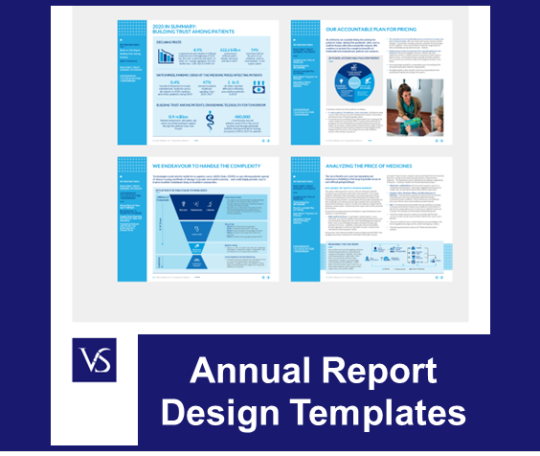
Visit: VS Website See: VS Portfolio
0 notes